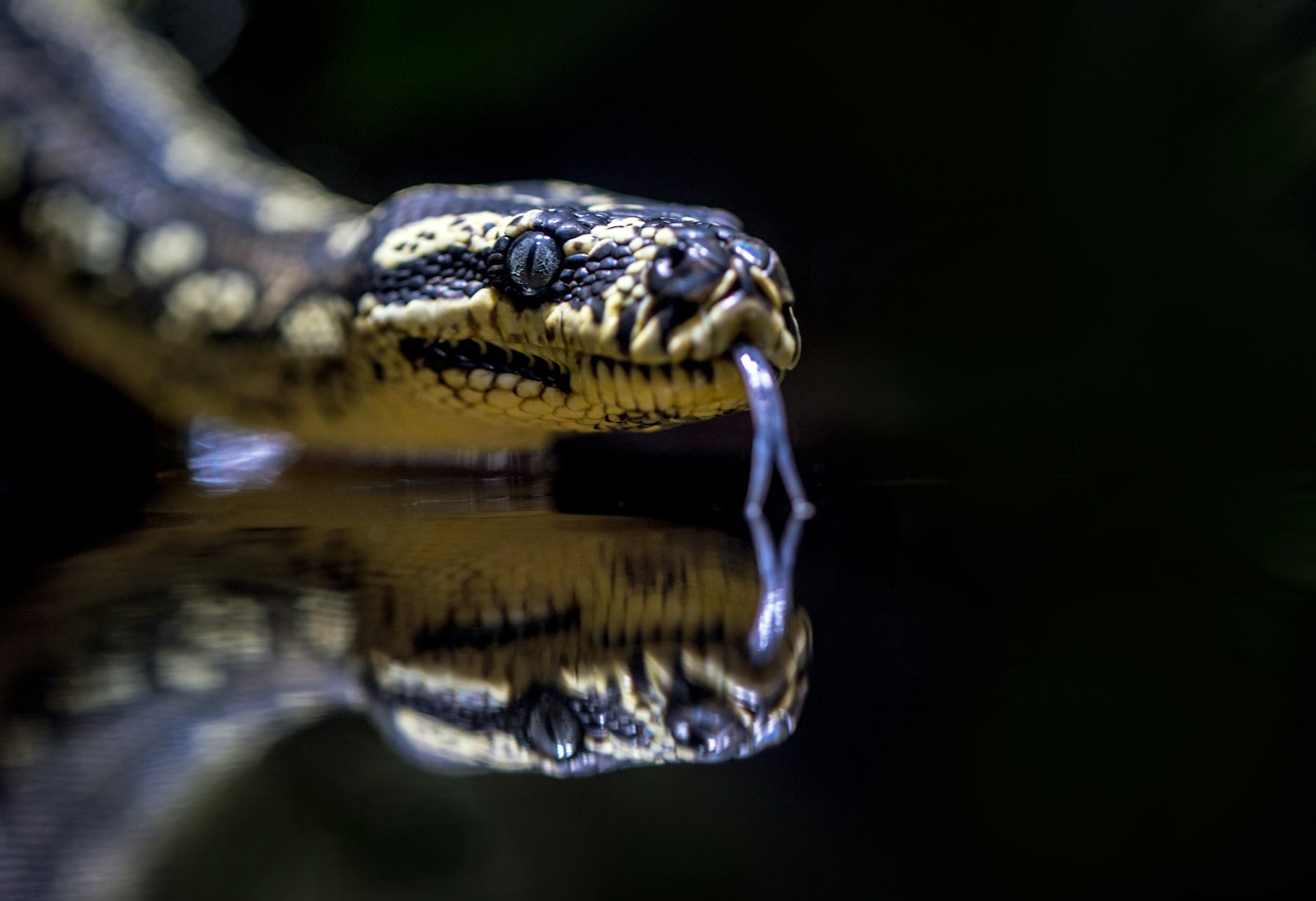For millennia, humans have been simultaneously fascinated and terrified by venomous snakes. These remarkable reptiles have evolved one of nature’s most sophisticated weapons systems – venom delivery mechanisms that can incapacitate prey and deter predators with astonishing efficiency. From the lightning-fast strike of a viper to the precise bite of a cobra, venomous snakes possess specialized anatomy that allows them to inject potent toxins directly into their victims.
This article delves into the intricate details of how snakes deliver their venom, exploring the fascinating biological structures and processes that make these creatures both deadly predators and vital components of their ecosystems.
The Evolution of Venom Delivery Systems
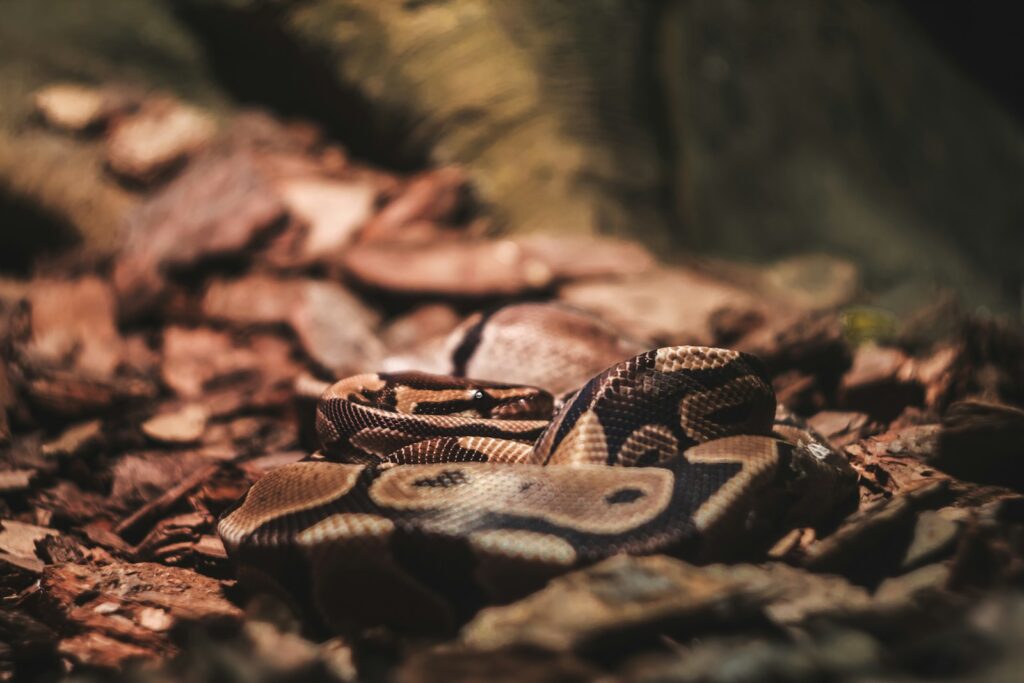
Snake venom delivery systems represent one of evolution’s most remarkable adaptations, having developed over millions of years through natural selection. Scientists believe venom originated from modified saliva glands, gradually evolving from digestive enzymes into complex cocktails of toxins.
This evolutionary journey has produced different venom delivery systems across snake families, each tailored to specific hunting strategies and ecological niches. Today’s venomous snakes showcase varying levels of specialization, from the highly advanced front-fanged vipers to the more primitive rear-fanged colubrids. This diversity of venom delivery mechanisms demonstrates how natural selection has refined these systems to maximize hunting efficiency while minimizing energy expenditure in different environments.
Types of Venomous Snakes
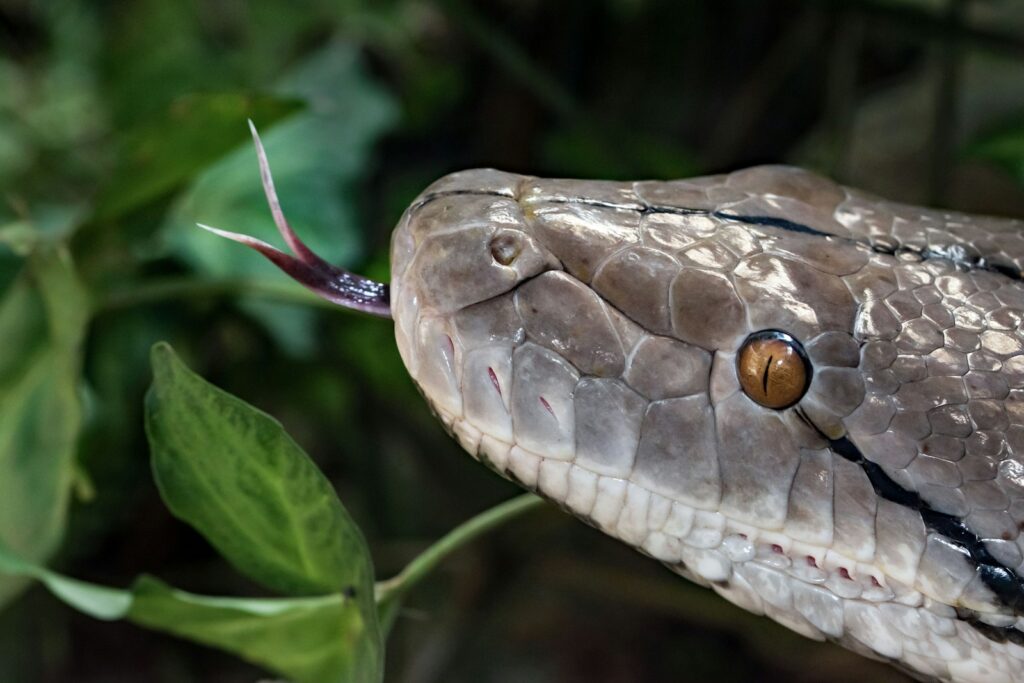
Venomous snakes are typically categorized into four main groups based on their fang structure and venom delivery mechanisms. Elapids, including cobras, mambas, and coral snakes, possess short, fixed front fangs that deliver neurotoxic venom through a groove rather than a hollow channel. Viperids, encompassing rattlesnakes, copperheads, and other vipers, feature long, hinged fangs that fold against the roof of the mouth when not in use.
Atractaspidids, like burrowing asps, have specialized side-striking fangs adapted for hunting in confined spaces. Finally, colubrids (rear-fanged snakes) have smaller fangs positioned toward the back of their mouths, making them generally less dangerous to humans despite having venom that can be potent to their natural prey. Each group’s distinctive fang arrangement reflects their hunting strategies and evolutionary history.
The Specialized Structure of Fangs
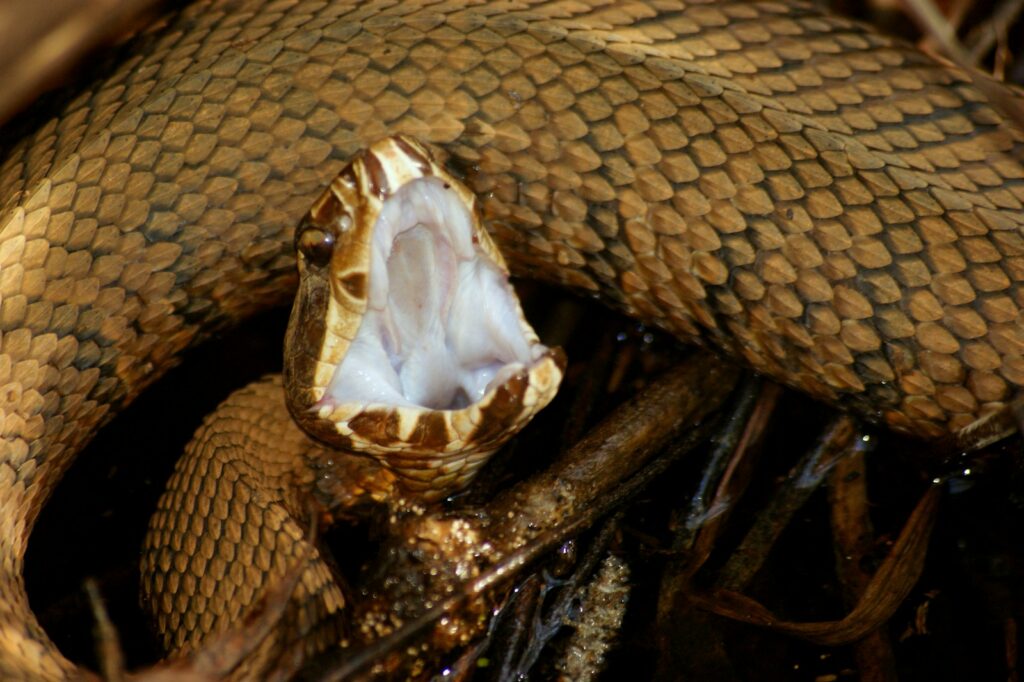
Snake fangs are modified teeth that have evolved specifically for venom delivery, representing a marvel of biological engineering. Unlike regular teeth, fangs typically feature a hollow or grooved structure that functions like a hypodermic needle, allowing venom to flow from the venom gland through the fang and into the victim. The fangs’ size, shape, and position vary dramatically across species – from the 2-inch curved daggers of gaboon vipers to the shorter, grooved fangs of coral snakes. In advanced venomous snakes like vipers, these specialized teeth connect to venom ducts and contain a hollow central canal called the venom lumen. The fang tips are exceptionally sharp and often feature a beveled edge that facilitates penetration through skin and scales while minimizing tissue damage that might block venom flow. This specialized structure ensures efficient venom delivery with minimal effort.
Venom Glands: Nature’s Chemical Factories

Venom glands are specialized structures located behind the snake’s eyes that produce, store, and regulate the flow of venom. These modified salivary glands have evolved to produce complex protein mixtures that can include dozens or even hundreds of different toxins in a single species. The main venom gland (sometimes called the primary venom gland) connects to the fang via a venom duct that carries the toxic fluid to the base of the fang during a bite. In many advanced venomous snakes, particularly vipers, the venom gland is surrounded by specialized muscles that contract during a bite, pressurizing the venom and forcing it through the ducts. Some species also possess accessory glands that add components to the venom mixture, potentially increasing its potency or specializing its effects for different prey types. This sophisticated biological system allows snakes to produce some of the most biochemically complex substances found in nature.
The Mechanics of a Venomous Bite
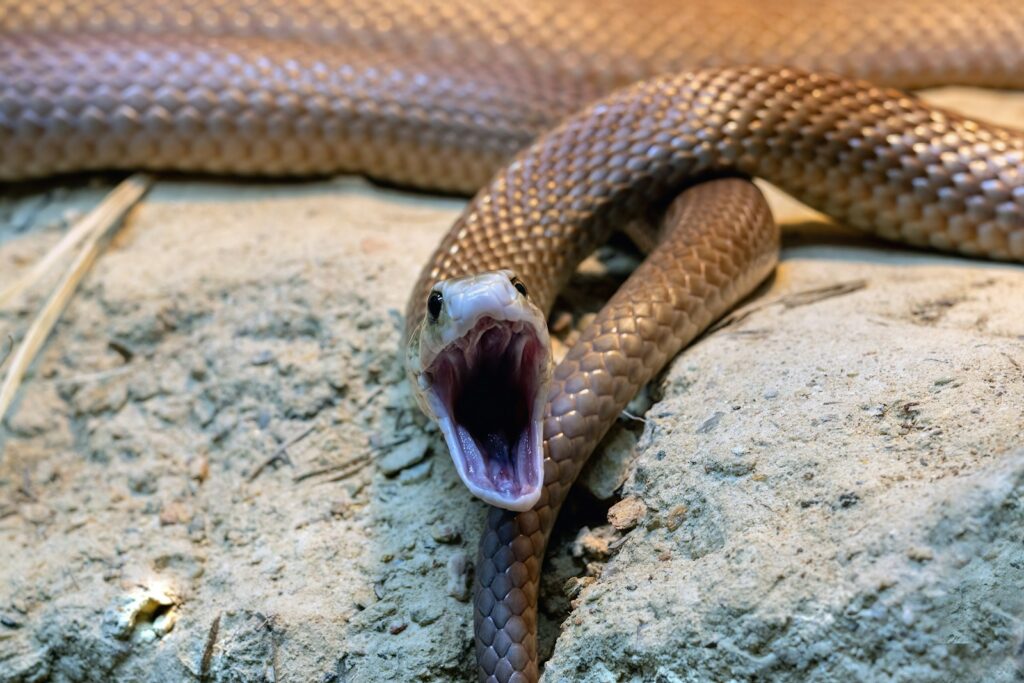
The process of a venomous snake bite is a precisely orchestrated sequence of actions that occurs with remarkable speed and efficiency. When a snake strikes, it extends its head forward, often opening its mouth to nearly 180 degrees to position its fangs for optimal penetration. In vipers with hinged fangs, specialized muscles rotate the maxillary bones forward, causing the fangs to swing down from their folded position into striking position. As the fangs penetrate the victim, muscles surrounding the venom gland contract, creating pressure that forces venom through the venom ducts and into the hollow fangs. The snake can control the amount of venom injected through muscular control, sometimes delivering a “dry bite” with little or no venom when merely defending itself. The entire striking and injection process typically occurs in less than half a second, making it one of the fastest predatory movements in the animal kingdom.
Venom Control: Dry Bites vs. Full Envenomation
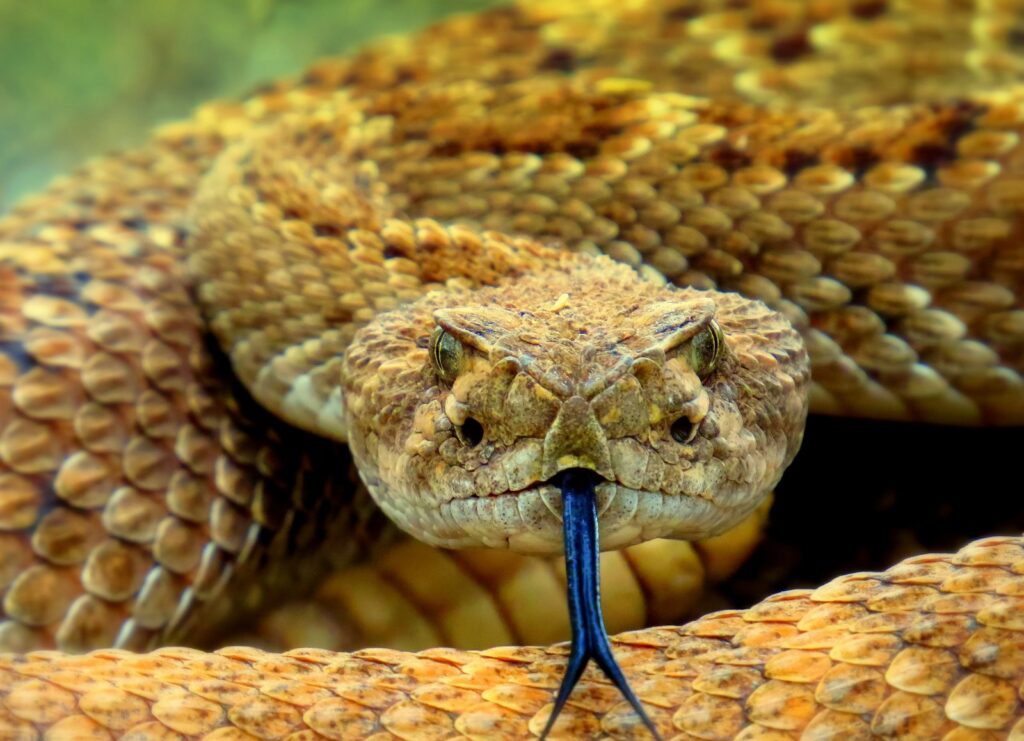
Contrary to popular belief, snakes can regulate the amount of venom they inject during a bite, exhibiting remarkable control over this precious resource. When striking defensively, many venomous snakes deliver what’s known as a “dry bite” – a bite that injects little to no venom, serving as a warning to potential threats without wasting valuable toxins. This venom conservation is crucial since producing venom requires significant metabolic energy, and snakes need it primarily for hunting rather than defense. When hunting prey, snakes typically deliver a full envenomation, injecting a sufficient dose to quickly immobilize their target. Research suggests that snakes can assess the size of their prey and adjust venom output accordingly, delivering larger doses to bigger or more dangerous prey. This sophisticated control system allows snakes to optimize their venom use for different situations, demonstrating another dimension of these animals’ remarkable adaptations.
Fang Replacement: The Continuous Renewal System

Venomous snakes possess a remarkable system for replacing damaged or lost fangs, ensuring they’re never without their primary weapons for long. Unlike humans with their permanent adult teeth, snakes continuously grow replacement fangs throughout their lives. These replacement fangs develop in folds of tissue called fang sheaths, positioned behind the functional fangs in various stages of development. If a primary fang breaks or wears down, the next fully formed replacement moves forward to take its place, typically becoming functional within a few days. Most venomous snakes maintain multiple replacement fangs in different developmental stages, with some species having up to five or six backup fangs on each side. This conveyor-belt-like renewal system ensures that even if a snake loses its primary fangs during a struggle with prey or a predator, it won’t remain defenseless for long. The replacement process is so efficient that a snake may replace each fang several times per year even under normal conditions.
Venom Composition and Specialization
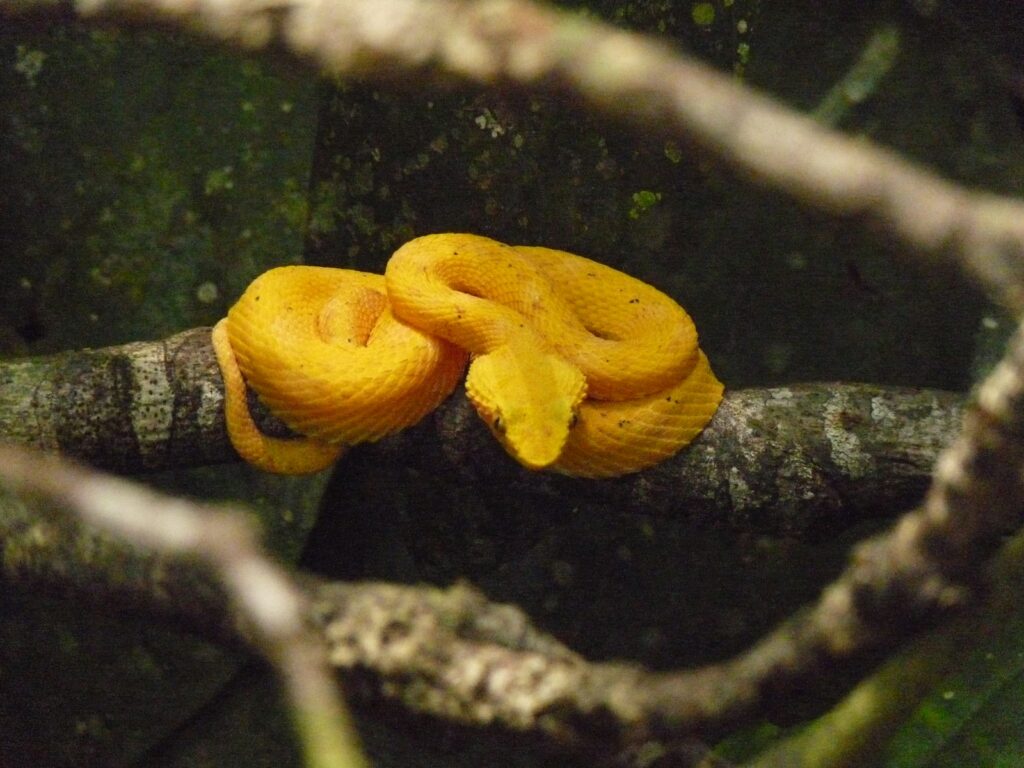
Snake venoms are extraordinarily complex mixtures containing dozens to hundreds of bioactive compounds, primarily proteins and peptides, each evolved for specific functions. Neurotoxic venoms, common in elapids like cobras and mambas, target the nervous system, blocking nerve signals and causing paralysis. Hemotoxic venoms, prevalent in vipers, attack blood cells and vessels, causing tissue destruction and preventing blood clotting. Cytotoxic components break down cell membranes and tissues, while myotoxins specifically target muscle tissue. Many snake species produce venoms with multiple toxic effects, creating synergistic combinations that maximize hunting efficiency for their particular prey. The composition of snake venom can vary significantly not only between species but also within a single species across different geographic regions, age groups, and even seasons. This remarkable specialization reflects the evolutionary arms race between snakes and their prey, with venom compositions adapting to overcome prey defenses and target specific physiological vulnerabilities.
The Role of Cranial Anatomy in Venom Delivery
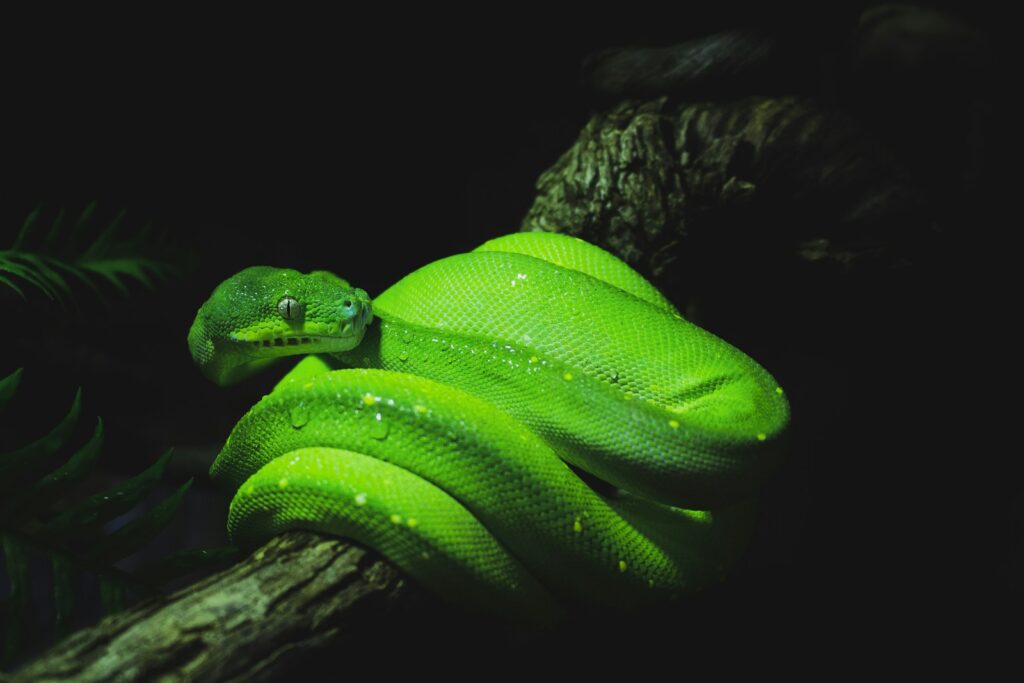
The skull structure of venomous snakes has undergone significant modifications to accommodate their specialized venom delivery systems. In advanced venomous snakes like vipers, the maxillary bones that hold the fangs are highly mobile, connected to other skull bones through a series of hinged joints. This kinetic skull design allows for the remarkable folding and extension of fangs during strikes. Specialized muscles connect various cranial elements, creating a biomechanical system that can rapidly deploy fangs and generate the pressure needed for venom injection. The quadrate bones, which connect the skull to the lower jaw, are particularly elongated in many venomous species, contributing to their ability to open their mouths exceptionally wide during strikes. Even the eye sockets have adapted in some species, positioned to allow for clear vision during precise strikes while accommodating the large venom glands that often occupy considerable space in the head. This integrated anatomical system represents one of nature’s most sophisticated weapons.
Strike Speed and Accuracy
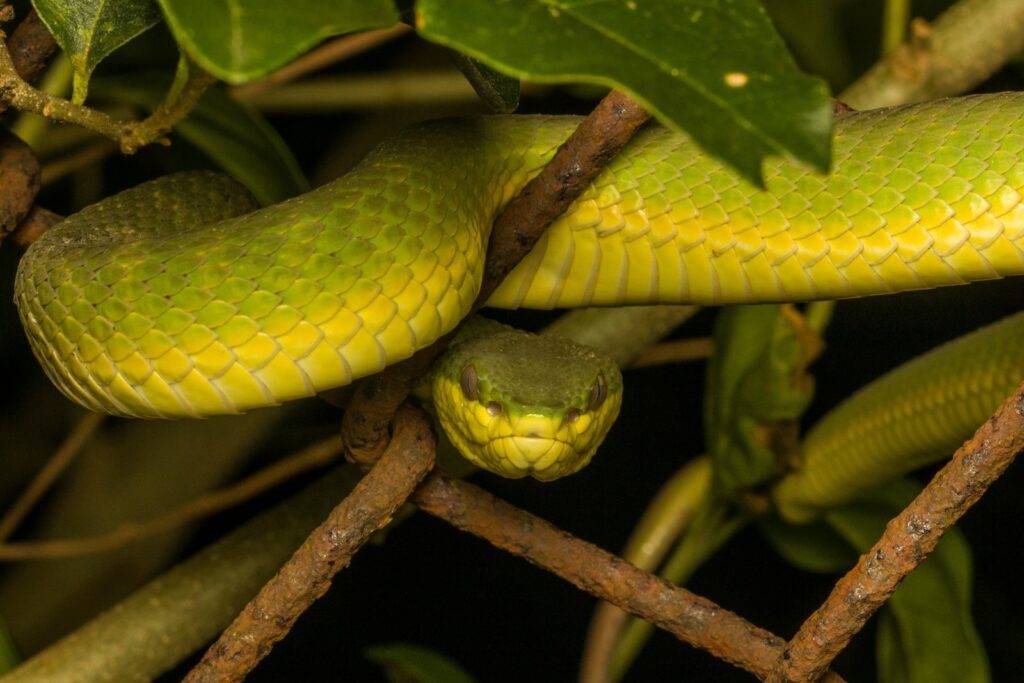
The strike of a venomous snake ranks among the fastest movements in the animal kingdom, combining explosive speed with remarkable precision. High-speed photography has revealed that vipers can strike at speeds exceeding 8 feet per second, with the fastest species reaching their target in less than 100 milliseconds – literally faster than the blink of a human eye. This extraordinary speed results from specialized muscles that contract with exceptional force, propelling the head forward while simultaneously opening the jaw and deploying the fangs. Despite this velocity, strikes are remarkably accurate, with snakes able to target specific vulnerable points on their prey. Many species, particularly pit vipers, enhance their striking accuracy using heat-sensing organs that create thermal images of warm-blooded prey even in complete darkness. This combination of speed and precision makes venomous snakes among the most effective predators in their ecosystems, allowing them to capture prey that might otherwise easily escape.
Different Injection Strategies Across Species
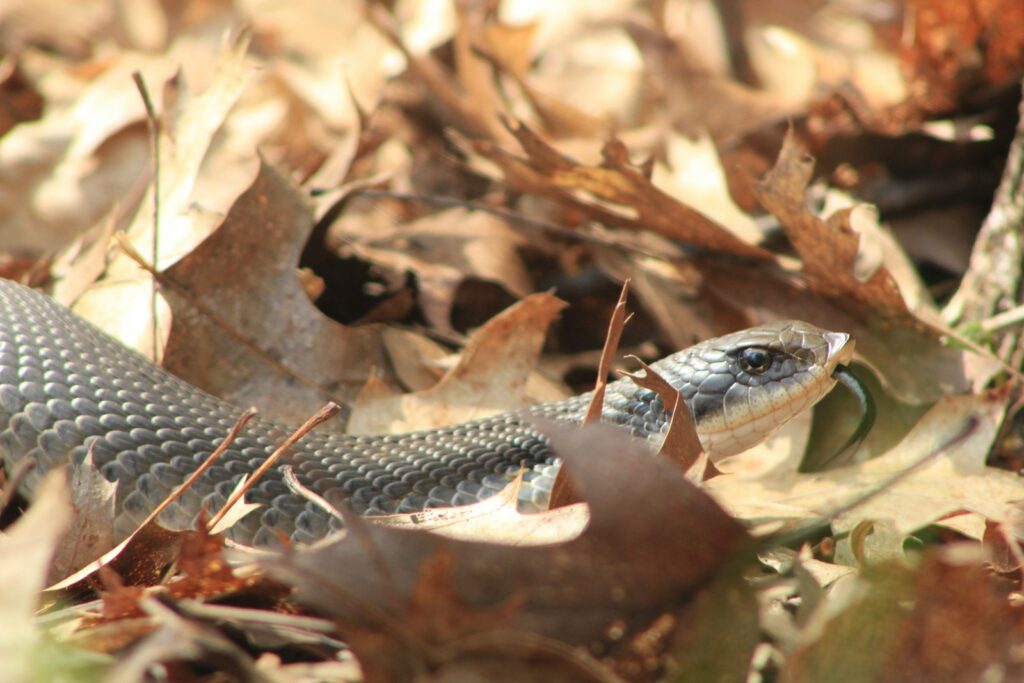
Venomous snakes have evolved diverse strategies for delivering their toxins, each adapted to their specific hunting techniques and ecological niches. Vipers typically employ a “strike-and-release” approach, delivering a quick, powerful bite before immediately releasing the prey and tracking it until the venom takes effect. In contrast, elapids like cobras and mambas often use a “bite-and-hold” strategy, maintaining their grip on prey while delivering multiple injections of venom. Spitting cobras have evolved perhaps the most unusual delivery method, capable of projecting their venom through the air by forcing it through specially modified fangs that create a fine spray when air is expelled forcefully. Rear-fanged snakes often use a “chew-and-work” technique, grasping prey and chewing to work their rear fangs into position for venom delivery. Some sea snakes have developed venom that acts extremely rapidly on fish, allowing them to immobilize prey almost instantly in the aquatic environment where pursuit would be difficult. These varied strategies showcase the remarkable adaptability of venom delivery systems across different snake lineages.
Medical Implications of Snake Venom Delivery
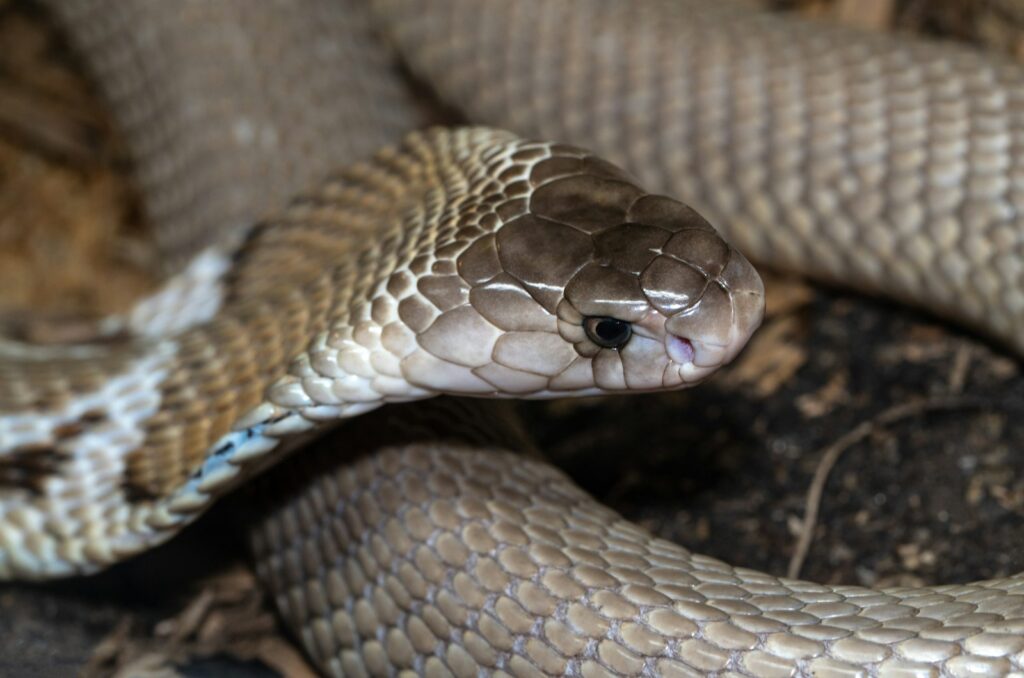
Understanding the mechanics of snake venom delivery has crucial medical implications for treating snakebite victims and developing effective antivenoms. The depth and location of fang penetration significantly affects venom distribution and absorption rates, with intramuscular injections generally being more dangerous than subcutaneous ones. Medical professionals must consider the specific venom delivery system of the snake species involved when assessing potential envenomation severity and determining appropriate treatment protocols. For example, bites from vipers with their deep-penetrating fangs often require different treatment approaches than those from cobras with their shorter fangs. The knowledge that snakes can control venom output explains the clinical observation of “dry bites,” where victims show puncture wounds but no venom symptoms. Advances in understanding venom delivery have also led to innovations in antivenom administration techniques, including the development of localized treatments that can neutralize venom components at the bite site before they spread throughout the body, potentially reducing the need for systemic antivenom with its associated risks of adverse reactions.
Conservation and Future Research
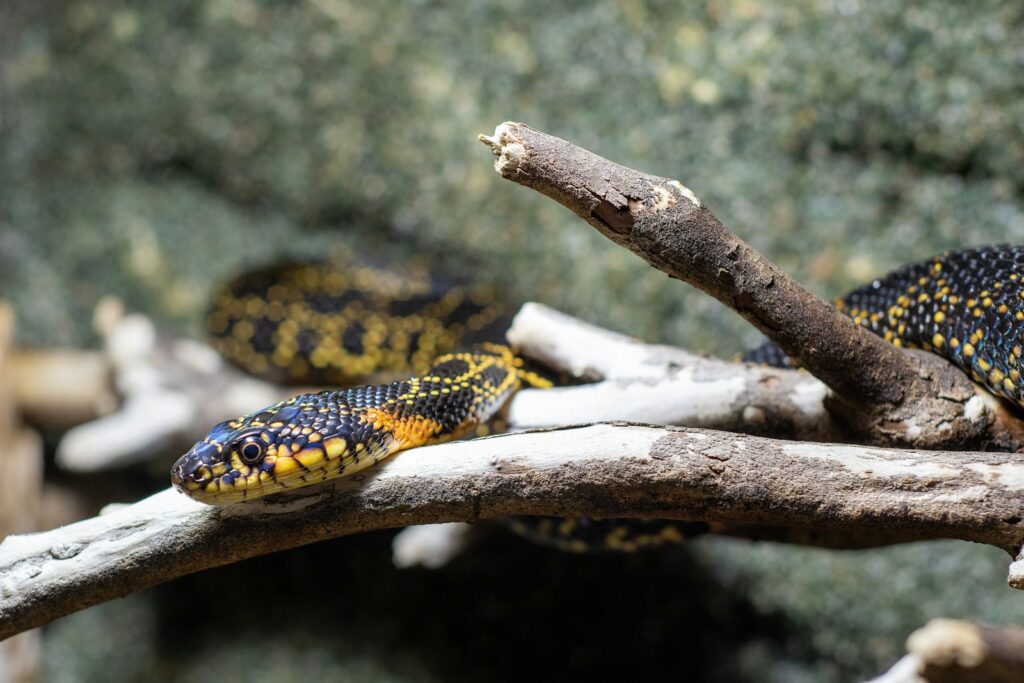
The sophisticated venom delivery systems of snakes represent not just fascinating biological adaptations but also valuable resources for scientific research and medical applications. Venomous snakes face numerous conservation challenges worldwide, including habitat destruction, persecution, and unsustainable collection for the pet trade and traditional medicine. Protecting these species is essential not only for ecological balance but also because their venoms contain compounds with potential applications in developing new medications for conditions ranging from pain management to cancer treatment.
Ongoing research into venom delivery mechanisms continues to yield new insights, with recent studies using advanced imaging techniques like high-speed X-ray videography to visualize the internal movements of fangs and skull bones during strikes. Future research directions include exploring the genetic basis of venom production and delivery, understanding how venom composition evolves in response to changing prey, and developing synthetic delivery systems inspired by snake anatomy for medical applications like targeted drug delivery. By continuing to study these remarkable adaptations, scientists gain not only a deeper appreciation for evolutionary processes but also potential solutions to human medical challenges.
Conclusion
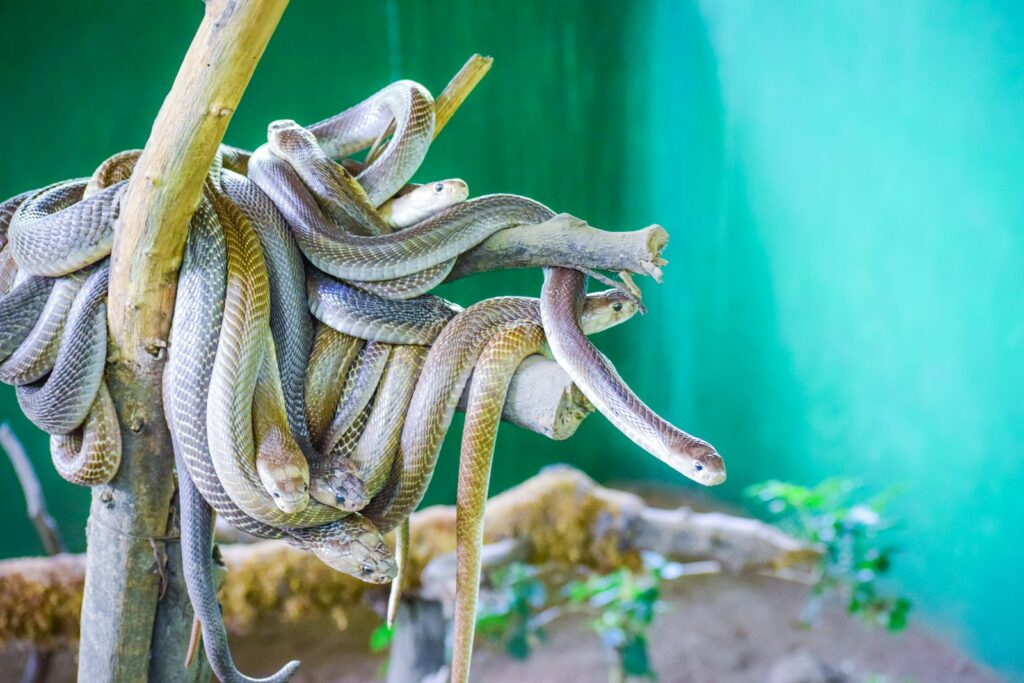
The venom delivery system of snakes represents one of nature’s most sophisticated weapons, refined through millions of years of evolution. From specialized fangs and venom glands to complex cranial mechanics and behavioral strategies, every aspect of this system demonstrates remarkable adaptation. The diversity of venom delivery mechanisms across different snake lineages showcases how natural selection has produced specialized solutions for various ecological niches and hunting strategies.
Beyond their ecological importance, understanding these systems has profound implications for medicine, conservation, and biomimetic technology. As we continue to study the intricate details of how snakes inject venom, we gain not only scientific knowledge but also potential insights that could lead to medical breakthroughs. These remarkable reptiles, often feared and misunderstood, deserve both our respect and protection as they continue to reveal their biological secrets.

